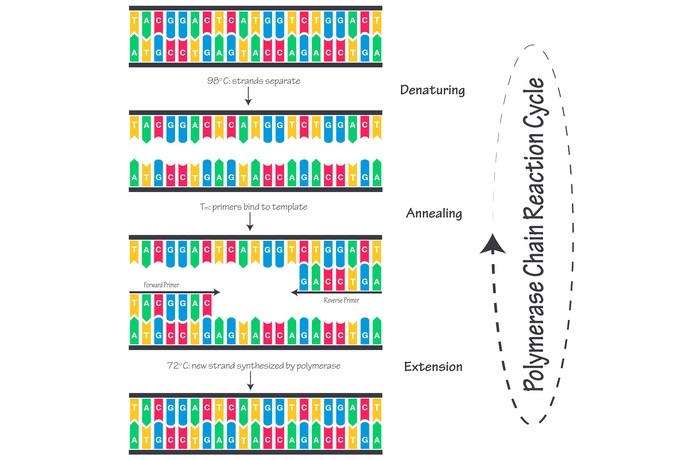
 Data Structure
Data Structure Networking
Networking RDBMS
RDBMS Operating System
Operating System Java
Java MS Excel
MS Excel iOS
iOS HTML
HTML CSS
CSS Android
Android Python
Python C Programming
C Programming C++
C++ C#
C# MongoDB
MongoDB MySQL
MySQL Javascript
Javascript PHP
PHP
- Selected Reading
- UPSC IAS Exams Notes
- Developer's Best Practices
- Questions and Answers
- Effective Resume Writing
- HR Interview Questions
- Computer Glossary
- Who is Who
What Are the Basic Techniques in Molecular Biology?
Introduction
Molecular biology is the study of the molecular basis of biological activity. It encompasses the structure and function of macromolecules such as DNA, RNA, and proteins, as well as the interactions between these molecules.

The techniques used in molecular biology have revolutionized the field of genetics and have enabled researchers to study the molecular mechanisms underlying a wide range of biological processes.
Discussed below are the basic techniques used in molecular biology and how they are used to study the structure, function, and regulation of biological molecules.
Polymerase Chain Reaction (PCR)
Polymerase chain reaction (PCR) is a technique used to amplify a specific DNA sequence in vitro. PCR is a powerful tool for molecular biology research, as it allows researchers to generate millions of copies of a DNA sequence from a small amount of starting material.
The PCR process involves several steps, including denaturation, annealing, and extension. In the denaturation step, the double-stranded DNA template is heated to separate the two strands.

In the annealing step, primers that are complementary to the target DNA sequence are added, which bind to the template DNA. In the extension step, a heat-stable DNA polymerase enzyme synthesizes a new complementary strand of DNA using the primers as a template.
Gel Electrophoresis
Gel electrophoresis is a technique used to separate and analyse DNA, RNA, and protein molecules based on their size and charge. In gel electrophoresis, the sample is loaded into a gel matrix and an electric field is applied, causing the molecules to migrate through the gel.
The gel matrix is typically made of agarose or polyacrylamide, which act as a molecular sieve to separate the molecules based on their size. The smaller molecules move through the gel matrix more quickly, while larger molecules move more slowly.

Gel electrophoresis is used in a wide range of molecular biology applications, including DNA sequencing, DNA fragment analysis, and protein purification.
Cloning
Cloning is a technique used to create identical copies of a DNA sequence. There are several methods of cloning, including recombinant DNA technology and polymerase chain reaction (PCR)-based cloning.
Recombinant DNA technology involves the insertion of a DNA sequence into a plasmid vector, which is then transferred into a host cell. The host cell replicates the plasmid, producing multiple copies of the inserted DNA sequence.
PCR-based cloning involves amplifying the DNA sequence of interest using PCR, and then inserting it into a plasmid vector using restriction enzymes and DNA ligase.
Cloning has numerous applications in molecular biology, including gene therapy, protein production, and genetic engineering.
DNA Sequencing
DNA sequencing is a technique used to determine the order of nucleotides in a DNA molecule. There are several methods of DNA sequencing, including Sanger sequencing and next-generation sequencing (NGS).
DNA sequencing has numerous applications in molecular biology, including gene discovery, genetic testing, and personalized medicine.
Protein Purification
Protein purification is a technique used to isolate and purify a specific protein from a complex mixture. Protein purification involves several steps, including cell lysis, protein extraction, and protein purification.
Cell lysis involves breaking open the cells to release the protein of interest. This can be achieved using mechanical methods, such as sonication or homogenization, or chemical methods, such as detergents or enzymes.
Protein extraction involves separating the protein of interest from other cellular components, such as lipids, nucleic acids, and other proteins. This can be achieved using various techniques, including chromatography, precipitation, and filtration.

Protein purification involves isolating the protein of interest to a high degree of purity and is essential for studying the structure and function of proteins and for developing drugs and other therapeutic agents.
Western Blotting
Western blotting is a technique used to detect specific proteins in a complex mixture. Western blotting involves several steps, including protein separation by gel electrophoresis, protein transfer to a membrane, and protein detection using antibodies.
In the first step of western blotting, the protein mixture is separated by gel electrophoresis and transferred to a membrane, typically made of nitrocellulose or PVDF. The transferred proteins are then immobilized on the membrane and can be detected using specific antibodies that bind to the target protein.
Western blotting is a powerful tool for protein detection and can be used to study protein expression, post-translational modifications, and protein-protein interactions.
Site-Directed Mutagenesis
Site-directed mutagenesis is a technique used to introduce specific mutations into a DNA sequence. Site-directed mutagenesis can be achieved using various methods, including PCR-based mutagenesis and oligonucleotide-directed mutagenesis.

RNA Interference
RNA interference (RNAi) is a technique used to silence gene expression by introducing small interfering RNAs (siRNAs) that target specific mRNA molecules. RNAi can be achieved using various methods, including transfection, electroporation, and viral transduction.
RNAi is used to study the function of specific genes and to develop gene therapies for various diseases.
CRISPR/Cas9 Genome Editing
CRISPR/Cas9 genome editing is a technique used to modify the genome of living organisms by introducing specific DNA sequence changes. CRISPR/Cas9 genome editing involves the use of a guide RNA that targets a specific DNA sequence and the Cas9 enzyme that cleaves the DNA at the target site.
CRISPR/Cas9 genome editing is used to study gene function, develop disease models, and develop gene therapies.
Fluorescence Microscopy
Fluorescence microscopy is a technique used to visualize specific molecules in living cells and tissues. Fluorescence microscopy involves the use of fluorescent probes that bind to specific molecules and emit light when excited by a light source.
Fluorescence microscopy is used to study various cellular processes, including protein localization, cell signalling, and gene expression.
Conclusion
Molecular biology is a rapidly evolving field that has revolutionized our understanding of the molecular basis of biological activity.
The techniques used in molecular biology are diverse and powerful, enabling researchers to study the structure, function, and regulation of biological molecules at the molecular level.

